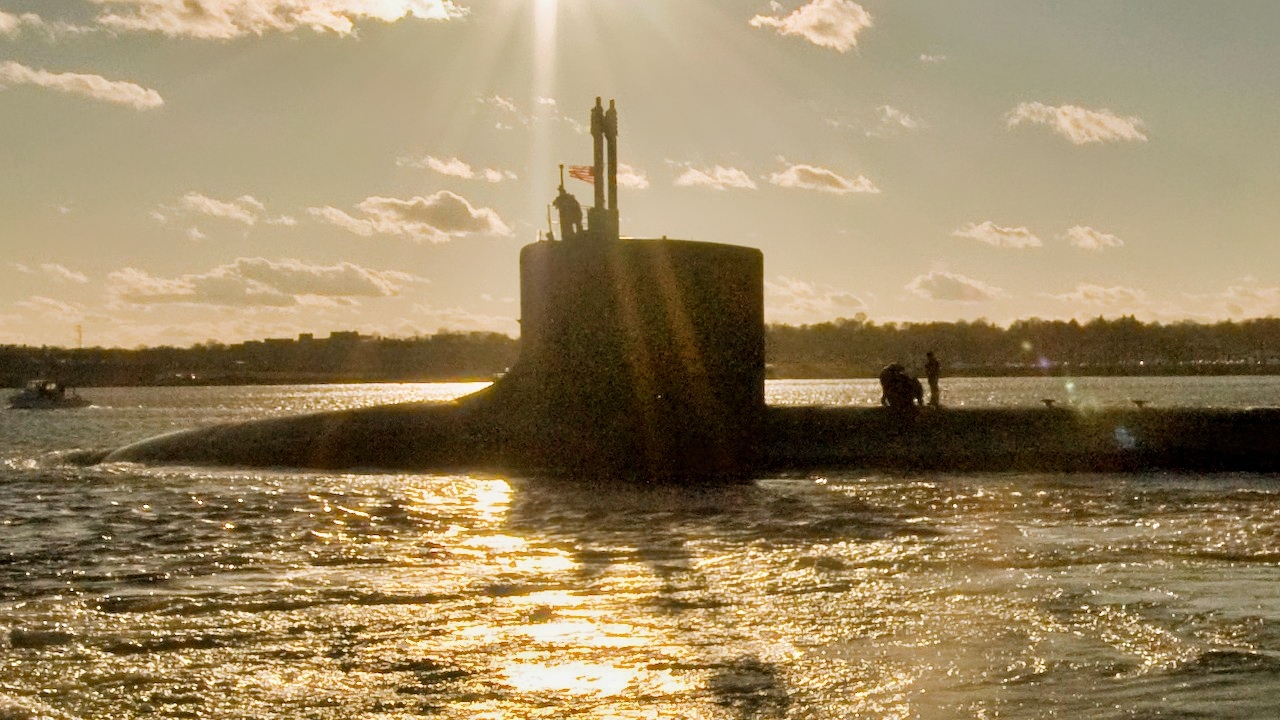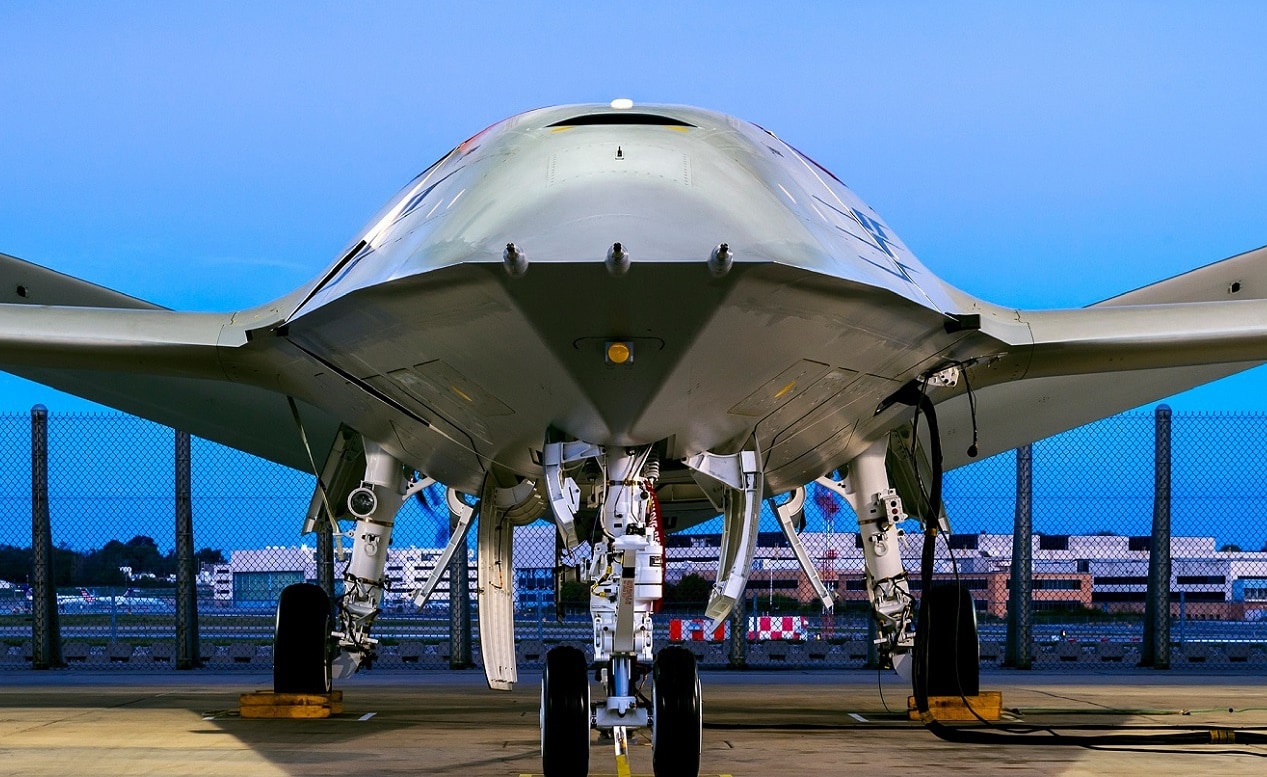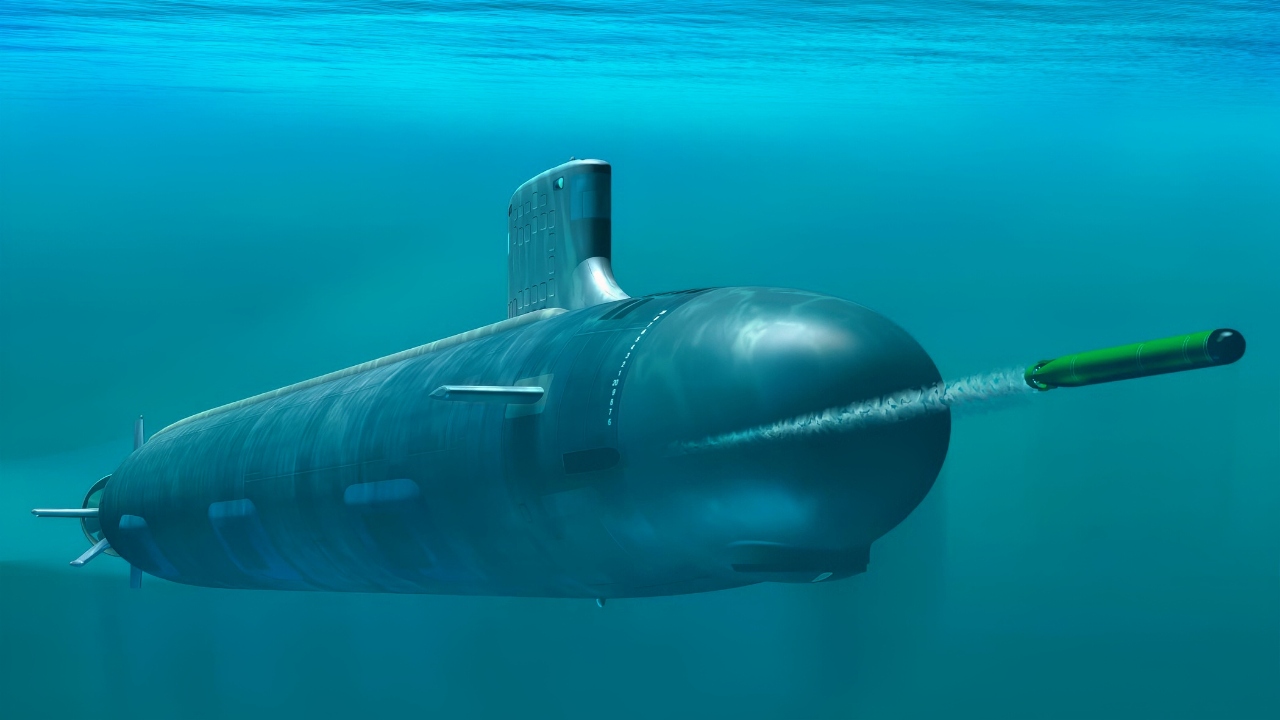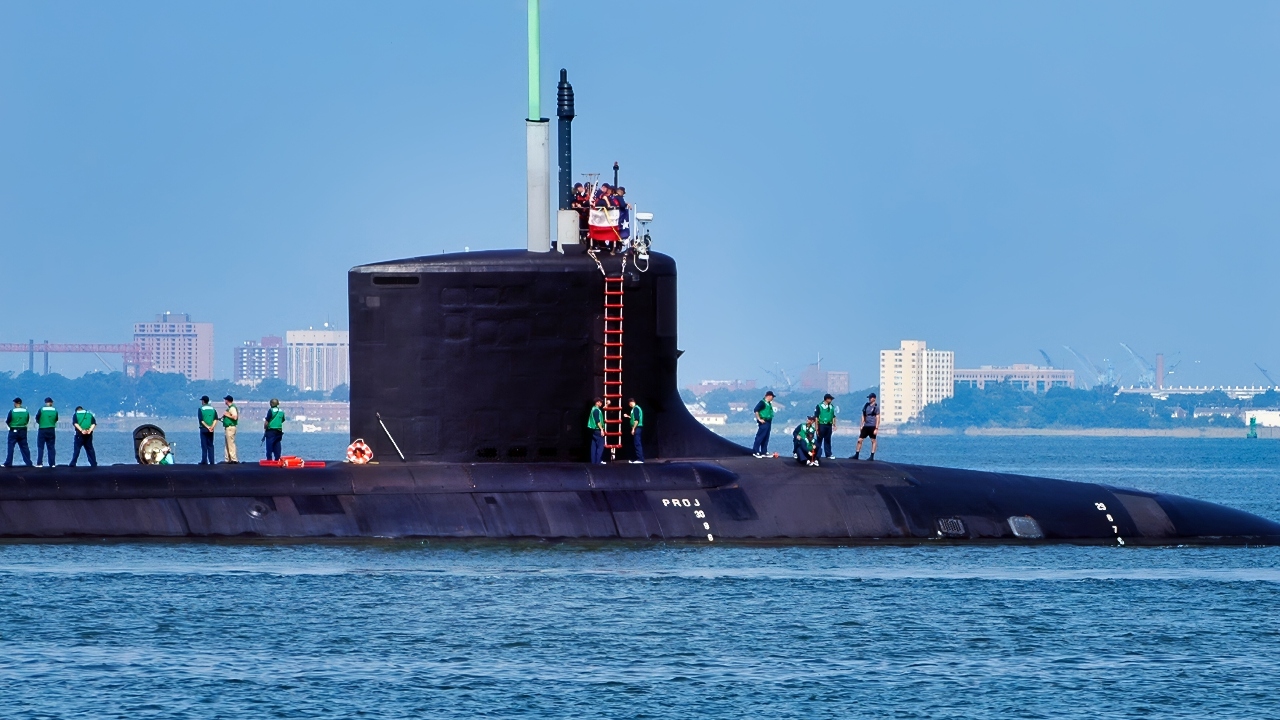Key Points and Summary – Aircraft carrier strike groups, featuring the Nimitz and Ford-class, face a world thick with anti-ship missiles, proliferating sensors, and drone swarms that make closing the coast increasingly risky and expensive.
-Ford-class carriers are technological marvels but impose heavy opportunity costs and still depend on getting within enemy threat rings to matter.

ATLANTIC OCEAN (Oct. 29, 2019) USS Gerald R. Ford (CVN 78) conducts high-speed turns in the Atlantic Ocean. Ford is at sea conducting sea trials following the in port portion of its 15 month post-shakedown availability. (U.S. Navy photo by Mass Communication Specialist 3rd Class Connor Loessin)

Ford-Class. Image Credit: Creative Commons
-By contrast, Virginia-class submarines with VPM and a new SSGN bring stealthy, survivable, deep magazines to the first 72 hours of war—delivering massed, long-range strikes without broadcasting a 100,000-ton signature.
-Keep carriers, but rebalance money and industrial effort toward undersea platforms, the only assets that guarantee early, decisive effects in the missile-saturated littorals.
The Case For Fewer Ford-Class Aircraft Carriers—and Many More Submarines
Here’s a fun fact about me that many people don’t know about me: in the early 2000s, I wasn’t in the defense and national security field, but rather working for a cable company in sales, back in the ‘Ocean State’ of Rhode Island.
What motivated me to take the risk of pursuing a college education (I quit four different times, how dumb), graduate school, and relocating with my wife to Washington, DC, to work for several think tanks and defense-related outlets over the years?
Simple: the rise of China’s military was an obsession of mine at the time, and specifically, the DF-21D missile and the threat it posed to U.S Navy aircraft carriers.
And, to this day, my worries have only grown.
The Ford-Class Aircraft Carrier Has a Problem
The reason for my fret is simple: change is hard. For a century, big-deck carriers have been America’s floating runways, the ship you send when you want to move history.
That logic is now colliding with a new reality: swarms of cheap drones and families of long-range anti-ship missiles are already changing the modern battlefield.
China and Russia—and a growing cast of regional powers—are mass-producing sensors and shooters that turn the near seas into contested airspace and the littorals into guided-weapon killing fields. Meanwhile, the U.S. Navy is pouring breathtaking sums into the Ford-class, exquisite ships that take a decade or more to build and require a constellation of escorts to survive.
This isn’t an argument against carriers as such. It’s a plea for arithmetic. When the cost of approaching a defended coastline keeps rising and the cost of a single hull keeps climbing, the smart move is to shift more of the striking power underwater—into Virginia-class attack submarines with the Virginia Payload Module (VPM) and a follow-on SSGN capability—platforms that can launch from standoff range with the cover of the ocean’s depth.

The Virginia-class attack submarine USS Virginia departs for a six-week underway. During this deployment, Virginia will undergo an Operational Reactor Safeguard Examination and a Tactical Readiness Evaluation to assess the submarine’s reactor along with its capacity to combat casualties through damage control.

110630-N-ZZ999-002.ATLANTIC OCEAN (June 30, 2011) The Virginia-class attack submarine USS California (SSN 781) underway during sea trials. (U.S. Navy photo by Chris Oxley/Released).
The Threat Has Changed Faster Than The Aircraft Carrier
Anti-ship weapons used to be a niche. Today they are an ecosystem.
China fields anti-ship ballistic missiles (the DF-21D and longer-ranged DF-26 family) explicitly tailored to hit high-value ships far offshore; it is also churning out air-, sea-, and road-mobile cruise missiles and a maturing web of over-the-horizon sensors to find targets and update their aim.
Russia, for its part, disperses Bastion coastal batteries firing P-800 Oniks and exports similar capabilities. Even second-tier militaries are buying or building truck-mounted anti-ship missiles, coastal radars, UAV spotters, and satellite links. The trend line points to more shooters, better seekers, wider coverage, and—crucially—higher re-attack capacity when the first wave doesn’t do the job.
A carrier strike group is not helpless against this. Aegis destroyers, E-2D battle-management aircraft, electronic warfare, decoys, and the future MQ-25 tanker to push the air wing’s reach outward are all part of the answer. But physics and geometry haunt the calculus: coast-based missiles enjoy home-field logistics and can be launched in salvos at a fraction of the price of the missiles required to stop them.
The closer a carrier must sail to generate decisive combat power, the sharper the trade becomes between risk and effect.
The Range Problem Never Went Away
Carriers project power by getting aircraft weapons in range—not by being present for presence’s sake. The catch is that the carrier air wing’s unrefueled strike radius has not kept pace with the growth in adversary missile envelopes.
The Navy is working to improve this with the MQ-25 Stingray refueler; on paper, that buys back hundreds of nautical miles of range for the F/A-18E/F and F-35C. It’s a needed step. It’s also a reminder of the trap: to fly farther, the air wing needs more tanking; more tanking means more deck cycle time and escorts; and more sorties in contested airspace mean more opportunities for the other guy’s surface-to-air missiles, fighters, and jammers to collect rent.

A MQ-25 Stingray sits parked in Hangar 1 on Scott Air Force Base, Illinois, May 12, 2023. The MQ-25 Stingray will be the world’s first operational, carrier-based unmanned aircraft and provide aerial refueling and intelligence, surveillance and reconnaissance (ISR) capabilities that enhance capability and versatility for the Carrier Air Wing (CVW) and Carrier Strike Group (CSG). (U.S. Air Force photo by Staff Sgt. Solomon Cook)

Image Credit: Creative Commons.
Long-range standoff weapons launched from carrier aircraft—JASSM-ER, future stand-ins, and maritime-strike Tomahawks fired by escorts—push back the problem, but they don’t abolish it. Find-fix-finish chains increasingly close at the speed of software. The reconnaissance-strike complex of satellites, high-altitude drones, shore radar, and passive RF sensors makes it hard to hide a 100,000-ton ship for long, especially when it must keep station to launch and recover aircraft.

JASSM Missile National Security Journal Photo
Opportunity Cost: The Ford-Class And The Budget You Don’t See
The Ford-class is exactingly modern—EMALS catapults, AAG arresting gear, redesigned electrical systems, and a flight deck layout aimed at higher sortie generation rates. It is also brutally expensive, schedule-sensitive, and reliability-dependent.
When a single ship soaks up that much money over that much time, you are not just buying a carrier. You are buying a fleet that didn’t get built—submarines not laid down, destroyers not modernized, depot capacity not expanded. Congress’s own oversight arm has spent years documenting the class’s cost growth, testing delays, and reliability shortfalls, and while progress is real, the opportunity cost is, too.
Even if every Ford-class delivered exactly on time and budget from here on out, the industrial base reality is stubborn: yards and skilled labor are finite, the Columbia-class SSBN program is the top priority, and submarine construction already lags the Navy’s two-per-year goal. The last thing you want when you’re short on attack boats is a budget that treats the carrier line as sacrosanct while the undersea line slips.
Why Submarines And SSGNs Solve The Problem You Actually Have
Stealth, range, magazine depth, and survivability—those are the superpowers you need when adversaries can blanket the near seas in sensor-shooter grids. Attack submarines bring all four.
Stealth: A submerged launch platform is inherently hard to find and fix; it forces the enemy to hunt the ocean’s volume instead of a ship’s wake.
Range & Payload: Virginia-class Block V boats add the Virginia Payload Module (VPM)—four large-diameter tubes that can carry 28 additional Tomahawks (on top of torpedo-room shots and earlier VLS), plus room for future large-form payloads.
Magazine Depth: The Ohio-class SSGNs set the gold standard with 154 Tomahawks per hull. They’re retiring in the next few years; nothing provides the same one-hull strike avalanche today.

SOUDA BAY, Greece (Sept. 7, 2019) The Ohio-class cruise missile submarine USS Florida (SSGN 728) arrives in Souda Bay, Greece, for a scheduled port visit, Sept. 7, 2019. NSA Souda Bay is an operational ashore base that enables U.S., allied, and partner nation forces to be where they are needed and when they are needed to ensure security and stability in Europe, Africa, and Southwest Asia. (Photo by Joel Diller/Released)

Puget Sound Naval Shipyard, Wash. (Aug. 14, 2003) — Illustration of USS Ohio (SSGN 726) which is undergoing a conversion from a Ballistic Missile Submarine (SSBN) to a Guided Missile Submarine (SSGN) designation. Ohio has been out of service since Oct. 29, 2002 for conversion to SSGN at Puget Sound Naval Shipyard. Four Ohio-class strategic missile submarines, USS Ohio (SSBN 726), USS Michigan (SSBN 727) USS Florida (SSBN 728), and USS Georgia (SSBN 729) have been selected for transformation into a new platform, designated SSGN. The SSGNs will have the capability to support and launch up to 154 Tomahawk missiles, a significant increase in capacity compared to other platforms. The 22 missile tubes also will provide the capability to carry other payloads, such as unmanned underwater vehicles (UUVs), unmanned aerial vehicles (UAVs) and Special Forces equipment. This new platform will also have the capability to carry and support more than 66 Navy SEALs (Sea, Air and Land) and insert them clandestinely into potential conflict areas. U.S. Navy illustration. (RELEASED)

Ohio-Class Submarine U.S. Navy.
Survivability: In an age of space-based detection, seabed sensors, and AI cueing, nothing is invulnerable. But a nuclear attack boat threading deep water enjoys far better odds than a 1,100-foot ship emitting radar, radio, and jet blast as it cycles a flight deck.
What does that buy you operationally? Standoff land attack from outside the densest missile belts; maritime strike with Block V Maritime Strike Tomahawk; SOF insertion and UUV deployment from covert positions; and the ability to pre-position firepower without tipping your hand. In a Taiwan or Baltic crisis, the presence of two SSGNs and a handful of VPM Virginias on the right arcs would change the political conversation more than the arrival of an additional carrier that must loiter west of a vast missile threat envelope.
“Carriers Or Submarines?” Is The Wrong Binary. The Right One Is “Right Tool, Right Now.”
The U.S. will—and should—keep carriers. They remain unmatched for peacetime signaling, theater air defense, ISR, and episodic strike in permissive to semi-permissive environments. They are also irreplaceable for humanitarian response and crisis management where few want to park bombers or fighters on foreign soil.
But the high-end fight that keeps planners awake—defeating a rapid fait accompli over Taiwan, blunting an assault on NATO’s northeastern flank, deterring a missile coercion campaign in the Middle East—leans heavily on undersea dominance. In those scenarios, counting the number of flight decks is less meaningful than counting survivable launch cells you can get on axis and on time. On that metric, submarines win.
The Industrial-Base Catch: You Can’t Buy What You Can’t Build
There’s a hard truth embedded in any call to “buy more submarines”: the yards are already straining.
I know firsthand, as employers in my old home state of Rhode Island struggle to find the workforce needed to build the submarines of the future, or in New London, just 45 minutes away.
The Navy’s own shipbuilding plan acknowledges that SSN(X)—the next-generation attack sub—has been pushed right in the budget, and that the industrial base needs sustained throughput to keep skills and suppliers alive. If we want more Virginias sooner, the answer is not just budget lines; it is predictability (multi-year buys), workforce growth (paid for and sequenced), and supplier development (especially castings, electronics, and large-diameter components).

SSN 774 Virginia Class Submarine Artist Rendering from U.S. Navy.

Norfolk, Va. (Aug. 22, 2006) – Sailors stationed aboard the Pre Commissioning Unit (PCU) Texas (SSN 775) stand topside as she gets underway from Naval Station Norfolk.
Here’s the good news: money you don’t tie up in Ford-class concurrency is money you can put into that base—tooling, training, second-source qual, regional workforce programs—so that two boats per year is the floor, not the ceiling. If we mean what we say about AUKUS, the case is even stronger: the U.S. cannot both meet its own SSN needs and export hulls without a bigger, steadier pipeline.
Replace The SSGN Avalanche—Don’t Handwave It
The four Ohio-class SSGNs have been the Navy’s stealth sledgehammers: each hull a 154-missile magazine with room for SOF and unmanned systems. They won’t last forever. The Navy’s plan to migrate strike capacity into Virginia VPM boats is necessary but not sufficient; a Block V Virginia with VPM is a powerful platform, yet it doesn’t replicate the single-hull volume of an SSGN. That’s why a new SSGN (sometimes called a Large Payload Submarine) is more than a luxury wish list—it’s the logical way to keep massed conventional strike under the surface as the Ohios retire.
Pair a handful of new-build SSGNs with a larger cohort of VPM Virginias, and you regain the ability to front-load war-opening salvos, collapse air defenses, and open corridors for carriers and bombers to exploit—without risking a capital ship in the first hours.
The Carrier’s Counterargument—And Why It’s Not Enough On Its Own
Carrier advocates rightly note that Ford brings a higher sortie generation rate, reduced crew, and the ability to host future unmanned aircraft. They’ll add that carriers are mobile sovereign airfields—a flexible piece of foreign policy that submarines, by definition, cannot replicate. All true.
But none of those strengths erase the budget and geometry problems that A2/AD adversaries have created. Carriers also depend on a fragile chain—from air wing readiness and tanker availability to emals/aag reliability and escorts with the right mix of SM-6s, ESSMs, and sensors at the right time. In a world where the first 72 hours of a major war may see thousands of long-range weapons fired by both sides, the winner is the team that can bring the most survivable launch cells to bear earliest. That team will ride steel under the sea.

(July 28, 2017) An F/A-18F Super Hornet assigned to Air Test and Evaluation Squadron (VX) 23 approaches the aircraft carrier USS Gerald R. Ford (CVN 78) for an arrested landing. The aircraft carrier is underway conducting test and evaluation operations.(U.S. Navy photo by Erik Hildebrandt/Released) 170728-N-UZ648-161.
A Smarter Program Of Record: What To Do Now
A prudent rebalance doesn’t scrap carrier aviation; it rights-sizes it and de-risks the opening phase of a high-end fight.
Slow The Ford Drumbeat: Fund completion and sustainment for ships already under contract; reassess the pace of follow-ons against the measured ability to field long-range carrier aircraft and robust defenses that make closing inside 1,000 nm survivable.
Accelerate Virginia + VPM: Lock in multi-year procurement for the maximum feasible run of Block V/VI, coupled with supplier-base investments that raise production above two per year. Tie payments to throughput and quality, not just award fees.
Commit To A New SSGN: Induct a Large Payload Submarine with hypersonic-capable cells, UUV bays, and command-and-control spaces. This is the cheapest way to keep the “154-missile shock” in the force. Maybe this could be the real SSN(X) the Navy needs?
Buy The Munitions: A rebalanced fleet is useless without magazines. Scale purchases of Maritime Strike Tomahawk, land-attack variants, and hypersonics for subs first. Weapons stockpiles—not just hulls—win the first week.
Fix The Depots And Data: Undersea dominance depends on availability. Fund public-private depot capacity, overhaul backlogs, and secure data rights to repair high-failure components faster.
Use Carriers Strategically: When carriers sail into the near seas, make it after the undersea punch has degraded coastal defenses, and with air wings configured for long-range effects—uncrewed tankers, stand-off weapons, and E-2D-led kill webs that keep the ship outside the heaviest threat rings.
The Politics Of Prestige Versus The Math Of Survival for the Ford-Class
It’s hard to loosen your grip on the platform that won Midway and defined American power for 80 years. Carriers are visible, photogenic, and politically potent. Submarines, by design, are none of those things. But visibility is not survivability, and prestige is not deterrence. Deterrence arises when the other side believes you can hurt them quickly, from far away, and at will, even on their best day. That’s an undersea promise.
The Ford-class is a technological marvel. It is not the wrong ship; it is the wrong priority in an era when opponents have optimized their arsenals to kill the thing we most love to build. Shift the investment. Put more of our striking power where their missiles can’t easily find it. Make the opening move underwater.
That’s how you give the Ford-class carrier back its freedom—to sail in when it chooses, not because it has to.
About the Author: Harry J. Kazianis
Harry J. Kazianis (@Grecianformula) is Editor-In-Chief and President of National Security Journal. He was the former Senior Director of National Security Affairs at the Center for the National Interest (CFTNI), a foreign policy think tank founded by Richard Nixon based in Washington, DC. Harry has over a decade of experience in think tanks and national security publishing. His ideas have been published in the NY Times, The Washington Post, The Wall Street Journal, CNN, and many other outlets worldwide. He has held positions at CSIS, the Heritage Foundation, the University of Nottingham, and several other institutions related to national security research and studies. He is the former Executive Editor of the National Interest and the Diplomat. He holds a Master’s degree focusing on international affairs from Harvard University.
More Military
India’s Big Blunder Purchase of Russia’s ‘Mothball’ Aircraft Carrier Still Stings
North Korea’s 10/10 Military Parade: What To Watch For
The New B-21 Raider Stealth Bomber Has Only 1 Real Enemy
Meet the AbramsX: The U.S. Army’s Next-Generation Super Tank
Russia’s Typhoon-Class Missile Submarine Was Something the U.S. Navy Still Can’t Match











Michael Perks
October 10, 2025 at 9:28 pm
Excellent article! You catch all the issues! IMO the system is so broken I’m not certain it’s fixable! While the Virginias seem to be excellent, the same can’t be said for surface forces. The last new “successful” surface class was the Burke of 1991! The Ford’s cost 2X what the last Nimitz did. (3X if you include development costs. 4+X’s with all the problems!) I wont even go to the LCS.